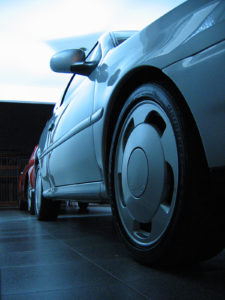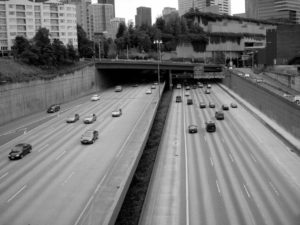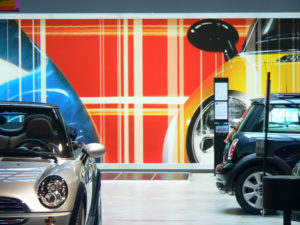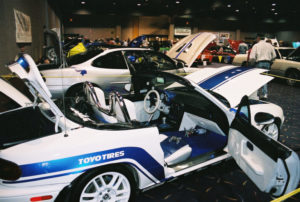What Cheap Full-Coverage Auto Insurance Really Means
 Cheap full-coverage auto insurance means you can have a level of car insurance that meets more than state requirements, but still pay less. You do not have to spend thousands of dollars each year.
Cheap full-coverage auto insurance means you can have a level of car insurance that meets more than state requirements, but still pay less. You do not have to spend thousands of dollars each year.
Take a moment to enter your ZIP code into the FREE toolbox found here and receive personalized car insurance rates!
Full-coverage auto insurance is not a specific package you receive. It is a mixture of the level of insurance your state requires, plus a few extras. For example, all drivers must have at the very least, bodily and property liability. This is the law in every state.
However, some states insist on additional levels. They may include underinsured/uninsured motorist coverage or collision and comprehensive. Full-coverage is not a requirement in any state, because it is not a true level of coverage.
You can choose the type of car insurance you need to feel fully covered without breaking your budget. With car insurance, it is all about the limits you select and the coverage levels. This is how your rates increase or stay low. If have a new car and want the best protection, pick many separate levels and list them on your policy.
Others like towing or rental reimbursement you might pass by. This is because neither of these levels of coverage protects your vehicle in the event of an accident or other disaster. This is how you can purchase cheap car insurance with full protection.
Look at the Levels Involved
According to the Insurance Information Institute, there are about six levels of car insurance. Typically, people combine them to make a full-coverage policy. They include bodily injury liability, personal injury protection, property damage liability, collision, comprehensive and uninsured/underinsured motorist coverage.
Having these listed is on your policy the best way for you to figure out the cost. You can surely find low-cost full-coverage; you just need to review your options.
 The levels have individual prices, ranging anywhere from $60 per year to as much as $250 to $300 per year. Typically speaking, the level of coverage that costs the most is the one that pays for damages or injuries.
The levels have individual prices, ranging anywhere from $60 per year to as much as $250 to $300 per year. Typically speaking, the level of coverage that costs the most is the one that pays for damages or injuries.
Your liability and PIP coverage are usually manageable. Lucky for you they are available with limits. Your state sets the minimum limitations. A liability and PIP policy with low state limits will be the least expensive. You should think about what you get for your money.
Lower limits mean less money if an accident occurs. This may leave you open for litigation if you cause more damage than your insurance company pays. Liability and PIP limits can start as low as $10,000 and go as high as $300,000.
You may not see significant increases if you change your selections just a little. A liability limit of $25,000, for example will not cause many problems for your budget. The same is true for PIP coverage. If you increase the limits to around $150,000, you stand a better chance of achieving true full-coverage protection.
The next highest rate may likely come from your collision and comprehensive. These two levels pay for the damage done to your vehicle. The costs vary from state to state, depending on the trends in each area. On average, you can expect to pay around $175 to $300.
Comprehensive and collision often have high rates because of the cost to repair the damages. The Federal Highway Administration reported an annual loss of $230 billon dollars for the auto insurance industry last year. This is an annual amount specifically due to automobile accidents.
What You Want to Cover and Why
The vehicle you want to protect is the determining factor in the level of auto insurance you need. Think about the risk factors, like auto theft. The Georgia Insurance Information Service lists the areas where car theft is highest.
 According to their report, the top three areas are in California. They are Fresno, Modesto, and Bakersfield. If you live in area with a large population, you may need comprehensive. Among other things, comprehensive protects against theft. The kind of car you drive is also important. Some cars are like magnets for car thieves.
According to their report, the top three areas are in California. They are Fresno, Modesto, and Bakersfield. If you live in area with a large population, you may need comprehensive. Among other things, comprehensive protects against theft. The kind of car you drive is also important. Some cars are like magnets for car thieves.
Comprehensive is a logical choice for anyone who wants to ensure protection. You will need to decide on a reasonable deductible. Bear in mind that most high deductibles can keep your premium low. So, if possible try to choose an amount over the minimum.
Most deductibles begin at approximately $250. If you have a newer vehicle, you may want to increase the amount to $500 or even $1,000. Sure, the extra expense may seem high, but look at the alternative.
Although you will pay more upfront, your policy rates can be drastically lower. The ultimate goal is for you to have as much protection as possible.
The Average Cost of Medical Expenses
The Center for Disease Control reported that the cost of motor vehicle related accidents soared to more than $99 billion in 2010. This adds to the cost of health care overall.
 Unfortunately, because these numbers increase each year, personal injury protection is a necessary part of auto insurance. If you want the ultimate coverage, you should at least consider this level. PIP helps with a number of medical expenses when liability reaches the limit. Anything deemed necessary is included.
Unfortunately, because these numbers increase each year, personal injury protection is a necessary part of auto insurance. If you want the ultimate coverage, you should at least consider this level. PIP helps with a number of medical expenses when liability reaches the limit. Anything deemed necessary is included.
Many people need additional medical attention due to car accidents after they leave the hospital. Treatments like physical therapy may be required. Under normal circumstances, this type of care is very expensive.
Having PIP is a great way to ensure your medical care will not end once you receive your hospital discharge papers. PIP can also help make up the difference in your income and even with childcare costs.
Free Car Insurance Comparison
Compare Quotes From Top Companies and Save
Secured with SHA-256 Encryption
Protection Against Other Drivers
Protecting your vehicle against certain circumstances is your main reason for car insurance. However, there are other issues as well. When considering the full protection aspect of car insurance, you also need to worry about others.
This does not mean pedestrians, although that is very important. This actually means other drivers. The Rocky Mountain Insurance Information Association (RMIIA) shows about 14% of all American drivers are uninsured or underinsured.
 There are even some states with averages with twice as many uninsured or underinsured drivers. When you think about these statistics, it becomes evident that you may need this. As part of your selections to build your full- coverage policy, this level is worth considering.
There are even some states with averages with twice as many uninsured or underinsured drivers. When you think about these statistics, it becomes evident that you may need this. As part of your selections to build your full- coverage policy, this level is worth considering.
Uninsured/underinsured motorist coverage is often the least expensive. The average annual cost for this level of protection is about $150. When considering monthly payments, this actually breaks down to about $12.50. This is cheaper than replacing a pair of windshield wipers.
It all boils down to your choices and making wise selections. You can have what you need. Just cover all bases to make sure you think about what can happen.
If you reflect on all the possible problems, it may overwhelm you. Instead, try to narrow everything down to your lifestyle. Include your place of employment. The places you normally drive your car. This will help you with your choices.
The Challenge of Repairing your Vehicle
Most people want full-coverage because they will know their car is safe. The liability aspect takes care of the other driver. Comprehensive protects against theft and PIP pays for medical expenses.
 If your vehicle is damaged, this is when collision is required. Liability will only satisfy the other driver’s claim. It will not repair the damage to your personal vehicle. Collision is often paired with comprehensive. You also need to choose a deductible amount.
If your vehicle is damaged, this is when collision is required. Liability will only satisfy the other driver’s claim. It will not repair the damage to your personal vehicle. Collision is often paired with comprehensive. You also need to choose a deductible amount.
Many times the two are the same. If your comprehensive deductible is $500, your collision should be similar. Once you pay the deductible, your car insurance company will take care of the damages.
There are times when an accident is minor. This is when a good number of customers begin complaining about their high deductible. They may not see any reason to pay $500 or $1,000 to open an insurance claim for damages that are less costly.
You need to be very shrewd if this happens. Remember, the car insurance companies keep records of every claim you file. It may be prudent to pay for the costs yourself and skip the claims process. Chalk up the loss and keep your record intact.
Cheap Full-Coverage Does Not Mean Cutting Coverage
By no means does finding cheap full-coverage mean you need to cut your coverage. You should be able to find adequate levels of everything you need. You just want to make wise decisions.
Stay far away from any auto insurance provider who tells you to cut corners to save money.
 Finding inexpensive coverage that will protect you and your vehicle is possible. If you learn the different types of limits, you can purchase the correct amounts that apply to your situation.
Finding inexpensive coverage that will protect you and your vehicle is possible. If you learn the different types of limits, you can purchase the correct amounts that apply to your situation.
You should also keep up with the laws that affect your state. Every year your legislation makes updates or changes. The auto insurance industry follows suit. You should be on the same level as they are.
Review your current car insurance provider’s website consistently. Read every notice they send you in detail. If you see any updates, never hesitate to contact them with questions.
Click here to access the FREE toolbox and find affordable rates fast by entering your ZIP code now!
